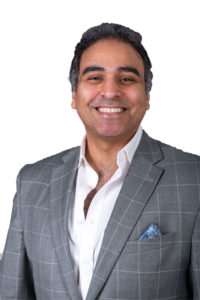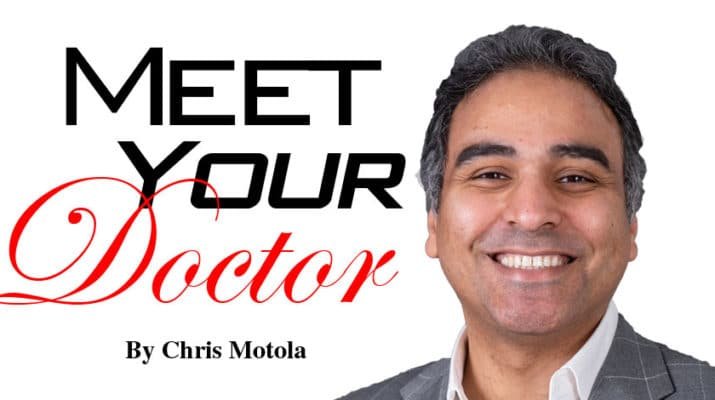Cardiac surgeon feeling right at home after moving to Buffalo from Mississippi
By Chris Motola

Q: You’ve recently relocated from down south to join Great Lakes Cardiovascular. What brought you to Buffalo?
A: Mainly family; my wife wanted to move north, but the opportunities here attracted me as well. I’m Egyptian. I moved to the States 12 years ago. I did my medical schooling back there but did my training over here. I’d been practicing in Mississippi for four years or so.
Q: Is it much of a change work-wise?
A: It’s basically pretty much the same. The population here is very similar in terms of the atmosphere. The medical and surgical side of it are almost exactly the same. The only real adjustment is the change in weather.
Q: What kinds of cases do you see as a cardiac surgeon?
A: The overwhelming majority of my practice is dedicated to open heart surgery; coronary artery bypass, valve replacement. I have an interest in aortic aneurysm repairs. That’s along with teaming up with other specialties like cardiology to work on complex cases.
Q: How well do you get to know your patients?
A: I think surgery is one part of what a provider in my field should do. It’s very important to me to meet the patient multiple times before surgery if time allows. Sometimes it doesn’t because they need to go to surgery in an emergency situation, but otherwise I like to meet with my patients to make sure they are comfortable with the decision-making process, answering their questions and making sure they’re making an informed decision. At the end of the day, it’s their body, their heart. They need to understand what’s going on, what options are available, what the outcomes could be. That’s for the patient and family as well. It’s very important for the treatment process to have this face-to-face discussion so they know who is taking care of their loved ones. Most of the time surgery is the easiest part. We also have a very good, multi-disciplinary team for following up the patient and helping them get past this event as quickly as possible. It’s a whole process. It takes a lot of time.
Q: Do you perform interventions?
A: It’s a whole different specialty than interventional where they do things like stents. But we do team up, put our heads together. I don’t personally do stents, but my colleague, an interventional cardiologist would be sitting next to me talking about an image we got back for a patient and try to figure out the best approach for that specific patient. So this partnership is very good for the patient, because they get the best of both worlds. Sometimes they need open heart surgery. Sometimes they need stents. Sometimes they need both.
Q: Walk me through the process.
A: We do it on every single patient. The traditional pathway for coronary heart disease would be the cardiologist sees the patient first, does imaging of the disease, and if the disease is extensive, they get me involved along with the interventional cardiologist. Let’s say the patient needs a three; four; or five-vessel intervention. We pick how many would be done by surgery and how many might need to be done in the future with stents. We call this a hybrid approach. That’s the norm nowadays. We find that when you combine multiple approaches you get the best results. We come up with a treatment plan. It’s a multi-stage process.
Q: Do you find yourself being called into a lot of different types of cases. Not just heart-related, but let’s say stroke?
A: No. It’s highly specialized. I do open heart surgery. Sometimes there’s collaboration between the interventional cardiology with other specialties like interventional urology and neurosurgery, but my role is a lot more specialized.
Q: With the move toward minimally invasive surgery most of the news you hear isn’t related to open heart surgery. What role does open heart surgery still play?
A: So most of the valve replacements and repairs we do now are minimally invasive. It saves a lot of pain and effort for the patient, and they tend to go home earlier. If a patient has coronary artery disease, they can get stents in there, but the majority of those patients have disease in multiple vessels. In these situations, surgery is better and has better outcomes than stents. The more disease you have, the more likely you’ll need open heart surgery if you want to live longer. For aortic valve disease it’s an upcoming field for endovascular, but for certain patients you still need open heart surgery. Most patients go home in three to four days, which sounds like a lot, but one day after your surgery you’ll be on your feet and a few days later you’ll feel good enough to go home. There are a few other diseases we treat as well.
Lifelines
Name: Awad El-Ashry, M.D.
Position: Cardiothoracic surgeon with Great Lakes Cardiovascular, a General Physician practice, at Buffalo General Medical Center
Hometown: Alexandria, Egypt
Education: University of Alexandria Faculty of Medicine; cardiothoracic surgery fellow, cardiac track, MD Anderson/UT Houston Memorial; chief resident, general surgery, University of Alabama, Birmingham. Postgraduate training: Yale University, resident; Weill Medical College of Cornell University, resident
Affiliations: Gates Vascular Institute; Buffalo General, ECMC
Organizations: Society of Thoracic Surgeons; Southern Thoracic Surgical Association
Family: Wife, three children
Hobbies: Soccer, reading, travel

